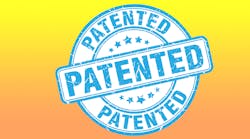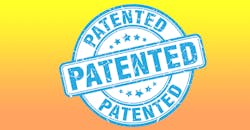Patent and Business Strategies for Inventors: Part 2
Download the PDF of this article.
A little over a year ago, MD published a piece I’d written on patent and business strategies for inventors. In that column, I described how inventors trying to save money on an idea that might not have broad or international appeal might consider filing Pro Se—i.e., without using a patent agent or patent attorney. I also mentioned that I was in the middle of such a process and couldn’t describe much more than the initial filing.
Well, today (April 5) that changed. Around noon I walked down to the Post Office and dropped off a letter addressed to the Commissioner of Patents with an enclosed check for the Issuing Fee. I expect that patent to issue in a matter of weeks.
In retrospect, the process was occasionally stressful and confusing, but with a little effort to read and understand the various supplied documents, some pro bono advice from a colleague, and a very helpful patent examiner, every issue was rather quickly resolved. The timeline looked like this:
March 8, 2015: Non-provisional utility patent filing via the USPTO’s Electronic Filing System (EFS). Drawings were prepared from SolidWorks 3D models and formatted in accordance with USPTO guidelines. Specification and claims were all drafted in MS Word using other patent documents and formatting styles adopted from patents applications I had helped to file for my employer. (Everything must be converted to the Adobe PDF format for filing.) The small-entity filing fee was $730.
September 8, 2016: At 18 months after filing, the application was published and became available for public review.
November 28, 2016: First Office Action received, citing reasons for broad rejection of claims as written and an assertion that the application documented not one, but four separate patentable ideas. With advice from a colleague (as noted above), a draft response was prepared arguing that while there might be two separate patentable ideas, there were not four. The claims were also redrafted, taking into account the examiner’s concerns and including some additional restrictions. Also on advice of my colleague, I scheduled a phone interview with the examiner. This proved to be helpful in clarifying the issues and laying a framework for a more formal written response to be mailed later. The examiner, on learning I was filing Pro Se, proved to be very patient and helpful, tacitly expressing genuine support for the process.
December 23, 2016: A formal response to the office action was filed, again using the EFS system. No additional fees were required.
March 8-10, 2017: Via a brief, informal e-mail exchange with the patent examiner, several additional objections were addressed and the claims rewritten a second time. The examiner again proved to be very supportive of the Pro Se process and agreed to take care of several minor formatting issues himself.
March 28, 2017: A “Notification of Allowance” document was mailed to me by the USPTO.
April 5, 2017: Letter posted back to the USPTO with an enclosed check for $480 (small-entity issue fee) and transmission form.
In guidance offered by the USPTO regarding Pro Se filings, they strongly urge inventors to use a registered patent agent or attorney whenever possible, and for good reason. Proper wording and support for patent claims is a learned skill and needs to be done well to provide the best possible defense for your intellectual property. They also recognize that, in some instances, the high cost of these services may be beyond the reach of individual inventors or small businesses. To put this in perspective, the total out-of-pocket cost for this patent prosecution to date has been $1,210. My employer’s patent firm charges that amount of money for about 80 minutes of legal services.
Another point of reference: A friend and I recently worked on an idea and agreed to split the cost of patenting the concept, using a firm he had worked with before—someone he trusted to get it right. In hindsight, I share his confidence that the work was done well. So far, however, we’ve paid that firm over $20K in fees. If the idea eventually goes to market, those fees will have been money well spent, if for no other reason than the peace of mind they help create. If the idea doesn’t survive the birthing process, as is the case with most patents, I’ll certainly regret the high cost of filing.
So, would I do the Pro Se process again? Absolutely…for certain patentable ideas that may have limited markets or other extenuating circumstances. In fact, I have two more pending at this moment. I’m hopeful they will go as smoothly. Stay tuned.


